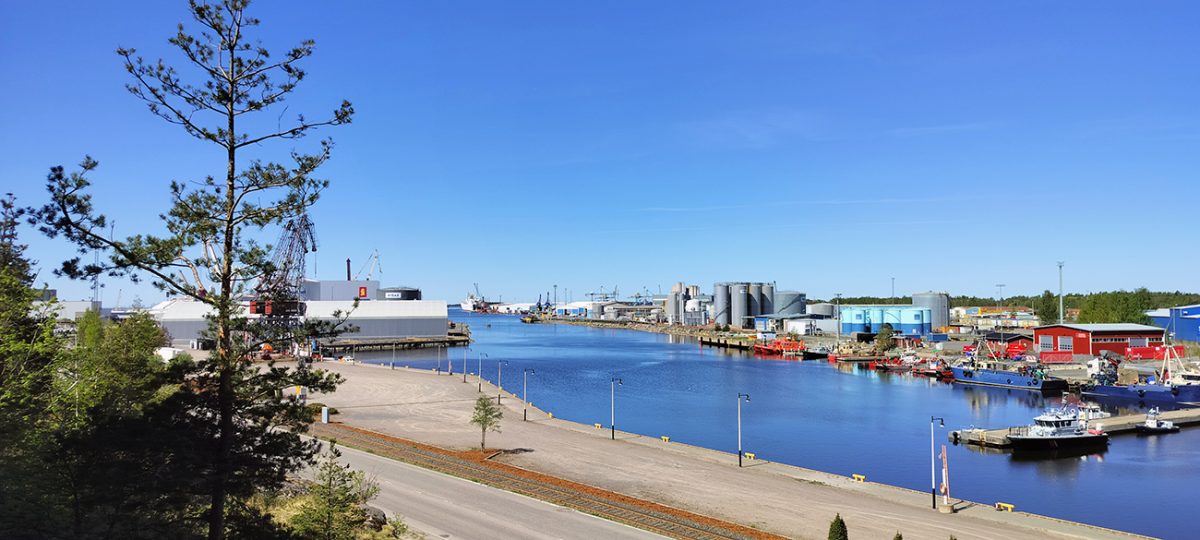
Sustainability, human resources (HR) and the European maritime single window environment sound as these three terms having nothing in common.
Maritime logistics consists of transporting of goods and passengers from point A to point B with ships. In these processes, a lot of digital information requiring cooperation and human skillset is generated, transferred, and shared between different organizations.
The maritime sector has traditionally focused on making profit and, in recent years, it has also placed significant emphasis on reducing CO2 emissions. Reducing CO2 emissions is one part of sustainability. Sustainability is balancing social, economic, and environmental aspects in different actions.
Traditionally, human resources (HR) are related to work contracts, managing aspects of the workforce, such as hiring, performance or safety. Sustainability, human resources, and the European maritime single window environment are united under one umbrella in NEMO CEF project both with scientific and practical aspects.
NEMO combining digitalization and sustainability in maritime logistics
European maritime single window environment (EMSWe) consists of harmonized and digitalized reporting procedures in maritime transportation. NEMO is the Finnish Maritime Single Window, which has been nationally developed several years and is taken in to use in August 2025.
NEMO is a part of the digitalization in the maritime sector. Different stakeholders, such as the system developers, users and customers have their values, mindset, and expectations to the NEMO. Some stakeholders are early adapters with sufficient resources, while others will react on the last minute. The human aspects vary between organizations, as well as between individuals. Each individual has an inner model on values, which develops in interaction with other people. Existing societal environment often hamper changes towards sustainable actions, as the environment favors individuals behaving according to the existing systems (Zabel, 2005). Sustainability in HR helps to ensure organization culture and community practices are inclusive and motivate employees (Lavri, 2023).
The sustainability of human aspects within NEMO must be considered in all phases of the process, in organizations’ planning and in short term and long term when NEMO is taken in use. There will be needs in skills update and training. Sustainable human resources management (HRM) can promote workers’ creativity and digitalization skills and to have an entrepreneurial mindset in the digitalized world. Sustainable HRM can reduce employees’ stress related to new online platforms, such as NEMO (Dapic et al., 2023).
Human resources management for sustainability
Different HRM’s have contributed to different aspects on responsibility, as Socially Responsible HRM to economic and social values, Green HRM to economic and ecological values, Triple Bottom Line HRM to triple bottom line values, and Common Good HRM to common-good values. The first three HRM’s have emphasis on economic values, while Common Good HR has an emphasis on finding solution for grand sustainability challenges (Aust et al., 2020). Nowadays, contribution to the economic values is not enough in maritime sector, so in development and in use of NEMO Common Good HR must be the basis of sustainable humanity.
The thriving of employees at work consists of vitality and learning. When employees are thriving, they are simultaneously proactive to co-create their job environment which will enable more thriving (Spreitzer et al., 2012). In NEMO, organizations have potential of not just taking the NEMO in use as a mandatory digital tool, but can get employees to thrive on the system, so the employees learn and develop the organizations further.
The EU has long been committed to improving worker well-being, employees’ sustainability has become an integral strategy for corporate growth (Bersin, 2023). SAMK’s Maritime Logistics Research Center will study and develop concepts sustainable humanity in NEMO, as this will ensure the success of employees’ planning, developing, and using in the digital system and will link sustainability and HR in European maritime single window environment.
Text: adj. prof., chief researcher Minna M. Keinänen-Toivola
Figure: Minna M. Keinänen-Toivola
References
Aust (Ehnert), A., Matthews, B., & Muller-Camen, M. (2020). Common Good HRM: A paradigm shift in Sustainable HRM? Human Resource Management Review 30, 100705. https://doi.org/10.1016/j.hrmr.2019.100705
Bersin, J. (2023). Sustainability Is About Your Workforce, Too. Retrieved May 17, 2024, from https://hbr.org/2023/09/sustainability-is-about-your-workforce-too
Dabic, M., Maley, J.M., Svarc J., & Pocek, J. (2023). Future of digital work: Challenges for sustainable human resources management. Journal of Innovation & Knowledge 8, 100353. https://doi.org/10.1016/j.jik.2023.100353
Lavri, O. (2023). Sustainability in HR: benefits, tips, and use cases. Retrieved May 20, 2024, from https://hrforecast.com/is-hr-turning-into-people-sustainability/
Spreitzer, G., Porath, C.L., & Gibson, C.B. (2012). Toward human sustainability: How to enable more thriving at work. Organizational Dynamics 41, 155-162. 10.1016/j.orgdyn.2012.01.009
Zabel, H.-U. (2005). A model of human behaviour for sustainability. International Journal of Social Economics 32, 717-735. https://doi.org/10.1108/03068290510608228